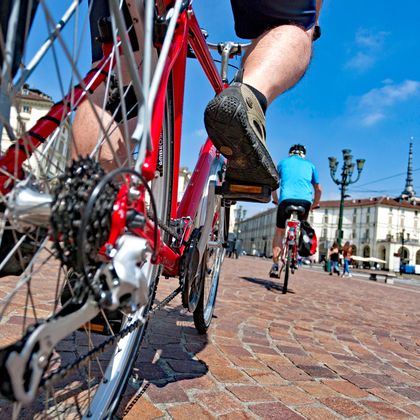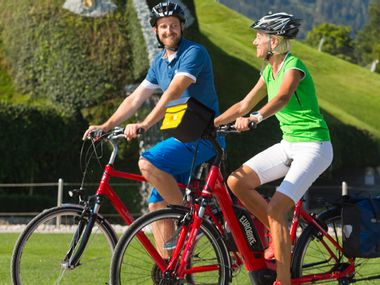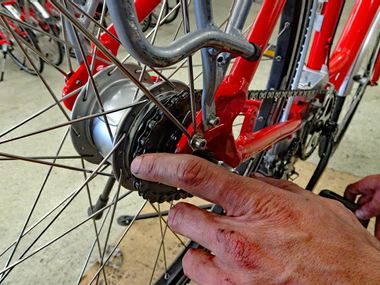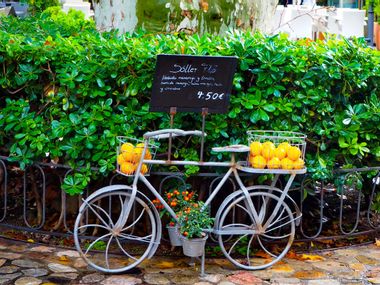Is this something you’ve ever wondered about? Basically, there are two common variants: the chain and the hub gear. Have you ever noticed the contraption on the rear wheel? The one with the spikes on it? This is a derailleur, and the spikes are called sprockets. They consist of individual gears and chainrings on which the chain moves back and forth. These rotate with you as you cycle. Therefore switching gear is only possible when moving. So when you shift, you basically give the command of how much of the chain should rest on each chainring on the back wheel. The more chain, the harder it will be to pedal. Incidentally, when looking at the pinion, you can see how many gears the bike has. If there are three sprockets in the front and seven sprockets in the rear, this is a 21-speed bike.
In contrast, the hub gear isn’t so easy to work out. The mechanics of this variant lies in the eponymous hub, in which a planet-like gear is at work. Inside the hub are two rings, between them a set of balls. As you change gears, these balls align and make moving easier or tougher.
Depending on the cycle tour, the Eurobike rental bikes are equipped with a chain or hub gear. Learn more!
By the way: The first bike was called Draisine. Read a short summary of the history of the bicycle on our CycleBlog.






